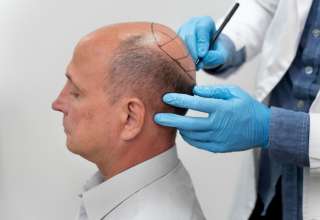Hurting your wrist is a big disadvantage. But, it becomes even greater when you hurt your thumb.
Thumbs are crucial for all actions you make with your hand. And, when you hurt them, you should prevent damage as soon as possible. You can do that with a thumb splint.
What’s Thumb Spica Splint
Thumb spica splint, more commonly known as thumb splint is a splint that immobilizes and stabilizes the thumb. Its purpose is to hold the thumb in a single position until it heals and becomes mobile again.
It’s a simple solution against sprains, overuse of thumb, and damaged wrist. There are different types of thumb splints, from regularly-issued hospital splints to custom splints you can buy.
But, the very design and function of thumb splint remain the same. It has a cast that envelops the wrist, isolating the thumb, and keeping other fingers free. This way, you can ensure that the thumb remains in a single position, without losing the mobility of other fingers.
However, thumb spica splint isn’t a universal solution. The patient should take great care of the arm, especially the thumb for the finger to heal the right way.
Hand And Thumb Injuries
When it comes to hand injuries, or hand and thumb injuries, people think about sprains. The sprain is an injury in which you exert too much force on a certain area. Then, the area, mostly a joint or a single extremity, loses its mobility and induces great pain to the person.
But, there are other injuries such as breaks and overuse. Breaks are injuries in which bones are broken. They may come in the form of falls, hits, and trauma. When a break occurs, you have to immobilize the bone until it heals right.
With overuse, you simply put too much pressure on the area, for example, a finger. The most common form of this injury is the tennis elbow. Then again, you have to immobilize the spot at first, and later use physical therapy to return the finger to the previous functionality.
Regardless of the injury, the way to treat it with a thumb splint remains the same. There are several steps you need to take to start the process of healing.
Immobilize The Wrist
Thumb spica splint’s first job is to immobilize the wrist. When you hurt the thumb, you can’t protect it and prevent further injury until you immobilize it. The thumb’s movement is directly connected to the movement of the wrist.
When you move the wrist, you are also moving the thumb. That could lead to a sharp movement that induces the pain and further damages the finger. So, to prevent that you want to isolate and immobilize the thumb and the wrist completely.
Injury recovery can’t begin without this. The thumb split erects the thumb, while other fingers are free to use. Yet, even though this is the case, you won’t be able to do much with just those fingers.
And, that’s important, since the reluctance to use the thumb leads to another important thing and that is the stabilization of the wrist and thumb, and therefore, the injury.
Stabilize The Wrist
Now that the wrist is mobilized, it’s time to stabilize the wrist. Since you are dealing with a sprain, you need to allow the sprain to heal naturally. Or, to be more precise, you need to allow the wrist and the thumb to stabilize.
The stabilization process occurs immediately after the immobilization. It’s the period ranging from the moment you immobilize the wrist till the moment you can take the splint off. During this time you may also take certain medications to speed up the recovery process.
As the stabilization progresses, the pain lessens and you can feel that you could move your thumb again. However, the cast is there for the right reason, because the pain did subside, but that doesn’t mean you should use the thumb right away.
Luckily, your hand will heal a lot faster with a thumb spica splint. After a certain period, you are free to remove the splint and return to your daily activities.
Recuperate From Injury
After you take the splint off, it’s time to return to your daily activities. This is a specially sensitive period since the injury will still be fresh. That means that you should take special care of your hand, and ensure that the thumb is safe.
So, use the opposite hand as much as you can. Don’t put too much pressure on the recently-hurt thumb. Use physiotherapy exercises to revitalize the thumb.
Soon, you’ll be ready to use the thumb again like you never hurt it before.
Injury Prevention
In the end, splints are just there to help you go through the injury. They can’t fully prevent it.
The best prevention you can have is to be careful. Watch what you do, and make sure you have splints for first aid when you get hurt.















